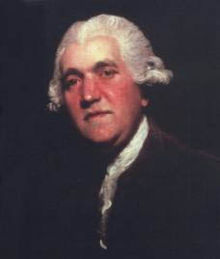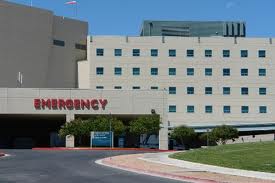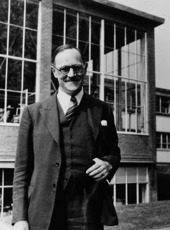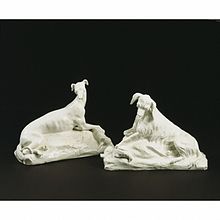Page removed for revision.
UNDER CONSTRUCTION
Page 2
Back soon, while waiting, play this Homer's Morrissey
Malcolm Baker PhD.
Having decided to see if I could come up with some ideas to earn a Nobel Prize for Economics, I decided to try to understand and master the subject. It only took the reading of one excellent book to understand the basics.
It is The Economics of Inheritance, by Josiah Wedgwood.
He had analized the inheritance figures in depth, and concluded two things.
1. 60% of the population will always be poor, and 40% will be rich.
2. That 90% of the world's wealth is owned by 10% of the population, and the rest of us, the other 90% have to get by on 10%. The wealth was, surprisingly, evenly owned by men and women, with perhaps a slowly increasing proportion being owned by corporations.
So what does that tell us? To improve the economy of a country, we have to try to transfer some of the wealth to the less well off? This means by producing those things they do not already have, and making them want to buy what we can produce.
But not necessarily so. Just because one household, to use an example, is considered poor by the standards of the rich, if they live in a freehold property, have an income sufficient their need, and have something left over to save, they may rich in their own minds. If all their neighbours are in the same situation, even though all are relatively poor, it does not matter. It only matters when teh income is insufficient to meet their expenses.
Nobody I know would argue that the world's economy is not stagnant, or in recession. This could be because there is not enough money in circulation, so people cannot buy what they want and need. To improve this it may be necessary to increase wages for the lowest paid, and also for the better paid, up to those who earn four times the minimum wage in order to maintain relativity in wages. How can this be done without increasing inflation, or as the current argument goes, increasing the number of unemployed.
One way would be for the government to mandate that there should be no unemployed. This would mean up to 10% (the current unemployment rate) increase in government spending. The government could simply say, "you must increase your work force by 10%, and we will pay them the minimum rate". Would it work?
A worker in Fiji earns $2 per hour. If eh wages increased to $4 per hour they would still be poor by world standards. A nurse in New Zealand earns about three times the minimum, or $42 per hour. If a nurse in Fiji earned $15 per hour it wold still be a little, but the skills of a nurse are the same the world over. It would make sense to train more nurses in Fiji. Even if a nurse went from New Zealand to Fiji to train, and earned $15 per hour, that wage would be high if teh money was spent in Fiji, and not repatriated back to New Zealand. If a nourse worked for six months in Fiji on Fijian wages, and six months in New Zealand on the New Zealand award, there could be both savings and benefits. A qualified nurse would then be free to take her skills to where ever they were needed.
Wedgwood said another thing. He talked about marginal utility, or the amont left over after all teh bills for teh weeek are paid. This is teh real wealth or disposable income, even if it is only $10 per week it is better than being $10 more in debe.
He also talked about fixed assets and moveable assets. Housing is an example of a fixed asset. You can't move it so if there is o demand where your property is, it is worth less. Art is a moveable asset, and is more valuable because it can move to the market, and the buyer can take it home.
In conclusion he talked about stimulating the economy. This means spending by the government. He said it made little difference where this spending took place, but that traditionally the banks received most of it. He thought it may be preferable to spend it on teh old people, because eventually the money will filter through the economy anyway. If somebody is being paid to do work that helps an old person stay in their home, and get their food and gardening and maintainance need taken care of, the people being paid to do the work will spend it, on things possibly that small businesses produce, and it moves through an economy several times.
This proposal is my own thesis in an attempt to win a nomination for a Nobel Prize for Economics.
The first task is to divide the world into nations, which it is obviously, and balance each of the individual budgets.
To do this the debt must be averaged over the whole population on the eve of every election, so the population know how much they are responsible for if it has to be repaid overnight. It can also be expressed as a % of national economic activity, private and public production or exports after all import casts have been deducted a % of Gross Domestic Product (GDP).
90% of the population control the other 10%
State Housing

The Minister of Finance is a senior figure within the government of New Zealand. The position is often considered to be the most important Cabinet role after that of the Prime Minister.
The current Minister of Finance is Bill English. There are also two Associate Minister roles. They are currently held by Simon Power and Steven Joyce.
To illustrate how a budget can be balanced, I have divided the economy into four ministries;
Education, Health, Housing, and Finance
Gross domestic product (GDP) refers to the market value of all final goods and services produced within a country in a given period. GDP per capita is often considered an indicator of a country's standard of living.[1][2]
Gross domestic product is related to national accounts, a subject in macroeconomics.
Gross National Product (GNP) is the market value of all products and services produced in one year by labor and property supplied by the residents of a country. Unlike Gross Domestic Product (GDP), which defines production based on the geographical location of production, GNP allocates production based on ownership.
GNP does not distinguish between qualitative improvements in the state of the technical arts (e.g., increasing computer processing speeds), and quantitative increases in goods (e.g., number of computers produced), and considers both to be forms of "economic growth".[1]
What I found was that a lot of the terms used by economists are flexible. It is like cutting up several cakes epresenting the economy in different ways. There appears to be no one standard way of measuring an economy.
30 years ago my parents invested in a property worth $52,000 at the time. Ten years later when I bought it from my sister it was worth double, or $110,000. In 2000 it was worth $250,000 and now it is worth $470,000. Unfortunately it still takes the same amount of work to earn $10,000 as it did 20 years ago. In 1980 I was earning $6 per hour, in 1990, $8, in 2011 the minumum rate is $13.50. If I sold the house and sections and spent the money, the economy would benefit. However if I spent some of that money on buying another property, even it was only half, that money would be locked up in that property. Unfortunately there is a lot of wealth tied up in real estate, and that is part of the problem. Even quite a modest house can be worth over $1,000,000. That is an awful lot of $14 per hour.
This is one fundimental problem. We are told that if wages rise, inflation would rise. Unually inflation is partly caused by the laws of supply and demand, where the price rises because there is a shortage of goods. When there is a surplus prices fall, and this is what is happening to the price of labour. Unemployment is over 5%. In the USA it is 9%. So what is happening in the supply and demand cycle for money itself. Liquidity is low, but interest rates are being kept low also. There appears to be an increasing gap between the low and middle class, and the wealthy. If you house is the most expensive item you will ever buy, how long is it taking the average and the low paid worker to pay for that house. If there is a formula which says no more than 25% of your income should go on rent, how realistic is that when actually shopping in the housing market. We are going to examine the basis for some of those claims.
Here I'm going to go out on a limb and say I believe the true price for a loan if market forces prevailed would be arond 10%. This is simply because of supply and demand, and the shortage of money. Somebody with money (a bank) must be persuaded to lend it. Somebody in business must make a profit, and it would be more sensibb=le to put more money into expanding a profitable business than putting it in the bank for a 2-3% return.
Why don't banks lend at 3% for 30 years as they used to?
Apparently that is not correct. They still do. Recently some US banks have been offering a 30 year mortguage at 4%. Does this make economic sense? Is offering a (Table) mortguage over 30 years any different from offering the same loan in 5 year terms? Yes, I think it is.
A basket of goods and services
that cost £130.00
in quarter 4 of 1947
would have cost $1,451.42
in quarter 4 of 1977
| Total percentage change | 458.2% |
| Number of years difference | 30.00 |
| Compound average annual rate | 5.9% |
| Decline in purchasing power | 82.1% |
| Index value for 1947 quarter 4 is | 33.1 |
| Index value for 1977 quarter 4 is | 184.6 |

Waterford produces many patterns of lead crystal stemware, including lines such as Adare, Alana, Colleen, Kincora, Lismore, Maeve, Tramore, and many others.







